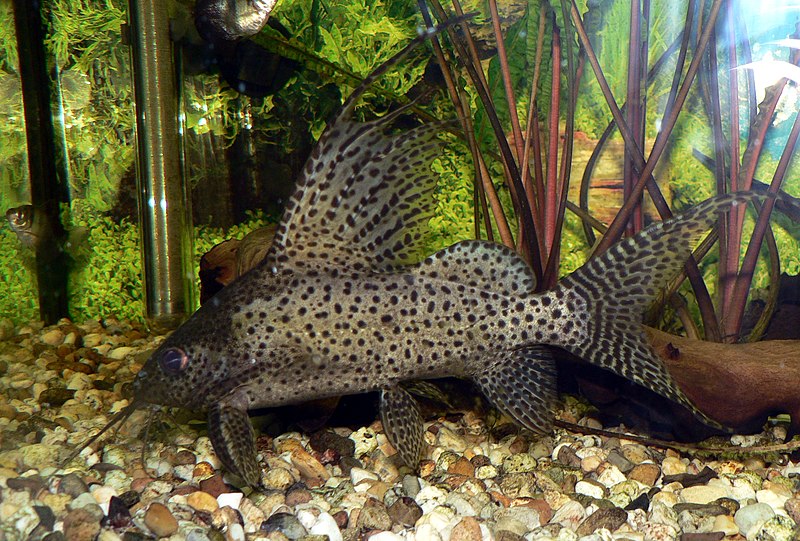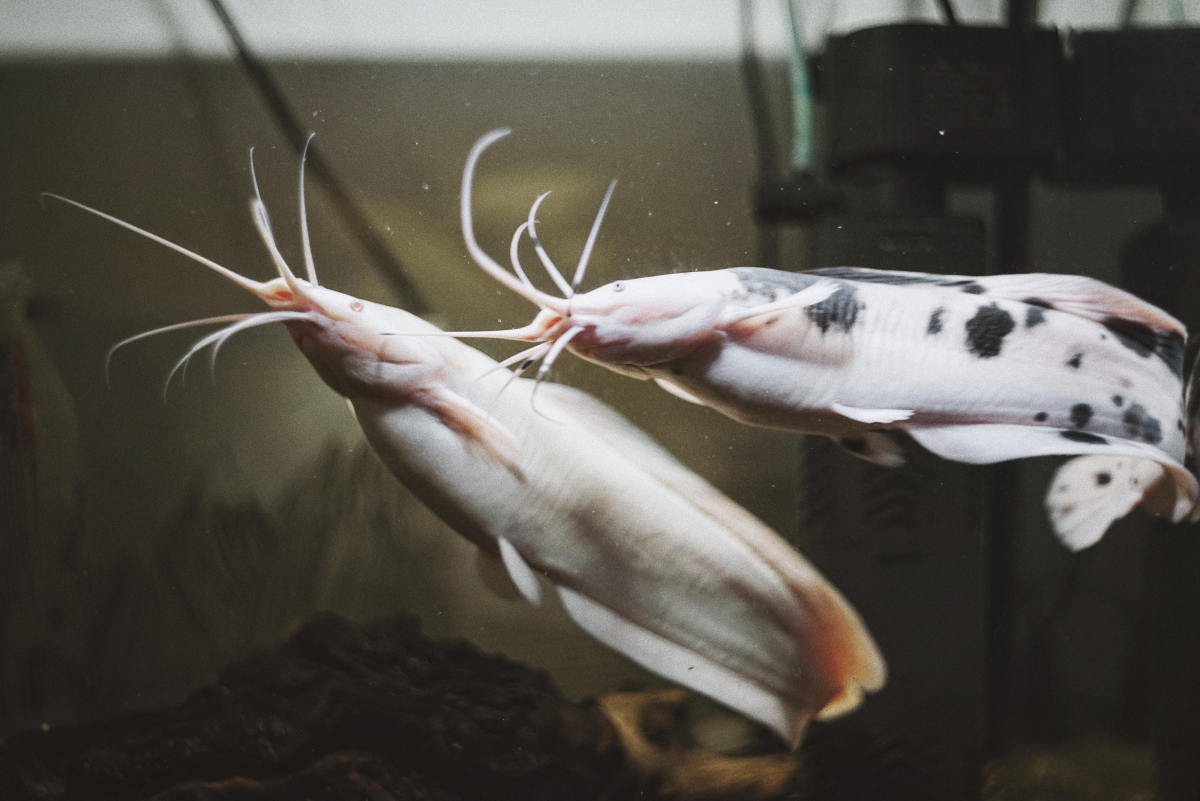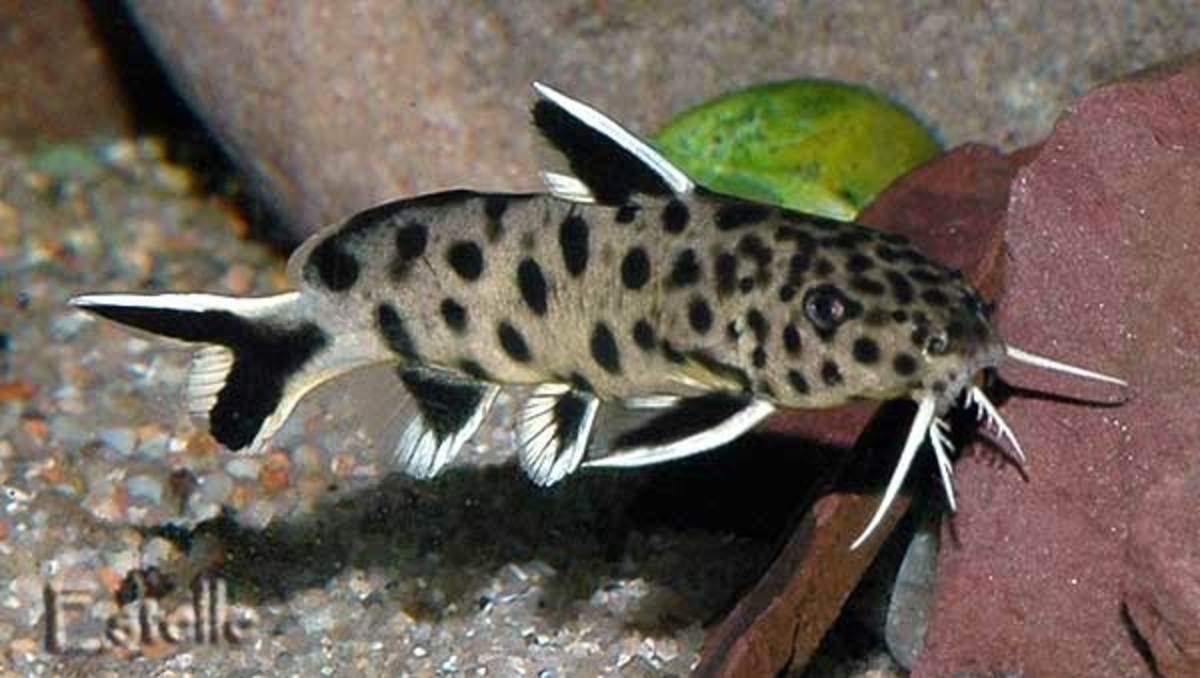Synodontis catfish can suffer from health problems such as ich, fin rot, and bacterial infections. Poor water quality often causes these issues.
Synodontis catfish, known for their unique appearance and behavior, are popular in home aquariums. These freshwater fish are generally hardy but can face health challenges. Maintaining pristine water conditions is crucial for their well-being. Common health problems include ich, fin rot, and bacterial infections.
Recognizing symptoms early can prevent serious health declines. Symptoms may include white spots, frayed fins, or lethargy. Regular water testing and proper tank maintenance are essential. A balanced diet and avoiding overcrowding also contribute to their health. Owners should monitor their catfish closely to ensure a thriving, disease-free environment. Proper care helps Synodontis catfish live a long, healthy life.

Credit: blogs.thatpetplace.com
Common Health Issues
Synodontis Catfish are popular aquarium fish. They are generally hardy, but they can face health problems. Understanding these issues helps in keeping them healthy.
Bacterial Infections
Bacterial infections are common in Synodontis Catfish. Stress, poor water quality, and injuries can cause these infections. Symptoms include red streaks, sores, and swollen areas. To prevent infections, maintain good water quality. Use a good filter and change water regularly.
| Symptom | Description |
|---|---|
| Red Streaks | Visible red lines on the body. |
| Sores | Open wounds or ulcers on the skin. |
| Swollen Areas | Parts of the body appear puffy. |
Treatment involves isolating the infected fish. Use antibacterial medications. Improve water conditions to speed up recovery.
Parasitic Infestations
Parasitic infestations are another health issue. Common parasites include Ich and Flukes. Symptoms include white spots, rapid breathing, and clamped fins. Infested fish may also rub against objects.
- Ich: White spots on the body and fins.
- Flukes: Visible on gills, causing breathing issues.
Treatment for parasites requires medicated baths. Raise the water temperature slightly. Clean the tank and replace some water. Ensure the new water is free of parasites.
Signs Of Illness
Understanding the signs of illness in Synodontis Catfish is crucial. Recognizing these signs early can save your fish from severe health problems. Below, we will explore behavioral changes and physical symptoms that indicate illness.
Behavioral Changes
Synodontis Catfish may exhibit several behavioral changes when ill. These changes are easy to spot if you observe your fish regularly.
- Reduced Appetite: A healthy Synodontis Catfish eats regularly. If your fish refuses food, it could be sick.
- Lethargy: Sick catfish may appear sluggish or inactive. They may spend more time hiding or resting.
- Erratic Swimming: Unusual swimming patterns, such as swimming in circles or upside down, indicate distress.
- Aggression: Increased aggression towards tank mates can be a sign of illness.
Physical Symptoms
Physical symptoms can provide clear indicators of health issues. These signs are often visible to the naked eye.
- Discoloration: Healthy Synodontis Catfish have vibrant colors. Fading or darkening of skin color is a warning sign.
- Fin Damage: Look for torn, clamped, or decaying fins. This can indicate infection or injury.
- Eye Issues: Cloudy or bulging eyes are signs of potential health problems.
- Body Lesions: Red sores, white spots, or other unusual marks on the body suggest illness.
- Swelling: Abnormal swelling in the abdomen or other body parts can indicate internal issues.
| Symptom | Possible Cause |
|---|---|
| Reduced Appetite | Stress, infection, poor water quality |
| Lethargy | Illness, poor diet, water conditions |
| Discoloration | Infection, stress, water quality |
| Fin Damage | Infection, tank aggression |
| Eye Issues | Infection, injury |
Always monitor your Synodontis Catfish closely for these signs. Early detection can lead to effective treatment and recovery.
Preventive Measures
Synodontis catfish are popular aquarium pets, known for their unique appearance. Keeping them healthy requires attention to several key factors. Preventive measures can help avoid many common health problems.
Water Quality Management
Maintaining clean water is essential for Synodontis catfish health. Regular water changes help remove toxins. Check the water parameters often. Ideal water temperature ranges from 72°F to 82°F. The pH level should be 6.5 to 7.5.
Use a reliable water filter to keep the tank clean. Ensure proper aeration to supply oxygen. Avoid overcrowding the tank to reduce stress.
Proper Nutrition
Feeding your Synodontis catfish a balanced diet is crucial. They are omnivores, so offer a mix of foods. Include high-quality pellets, live, and frozen foods.
- Bloodworms
- Brine shrimp
- Algae wafers
Avoid overfeeding to prevent obesity and water quality issues. Feed small amounts twice a day.

Credit: pethelpful.com
Quarantine Practices
Quarantine practices are crucial for maintaining the health of Synodontis Catfish. Proper quarantine can prevent the spread of diseases and parasites. This section will guide you through effective quarantine practices.
Isolation Techniques
Isolation is the first step in a successful quarantine. Use a separate tank for new or sick fish. This tank should be clean and have similar water conditions as the main tank.
- Set up a separate tank with a filter and heater.
- Ensure the water temperature matches the main tank.
- Use a net to transfer the Synodontis Catfish to the quarantine tank.
Observation Period
The observation period is essential for detecting any health issues. Monitor the Synodontis Catfish for at least two weeks.
- Check for any signs of disease daily.
- Look for abnormal behavior or appearance.
- Keep a log of any symptoms noticed.
| Observation Task | Frequency |
|---|---|
| Check for visible parasites | Daily |
| Monitor water quality | Every 3 days |
| Log fish behavior | Daily |
Using these quarantine practices can significantly reduce health problems. Your Synodontis Catfish will be healthier and happier.
Treatment Options
Synodontis Catfish can face various health issues. Proper treatment is crucial for their well-being. Below are effective treatment options to consider.
Medications
Medications can help treat many fish diseases. Common health problems in Synodontis Catfish include fungal infections, bacterial infections, and parasites.
- Fungal Infections: Use anti-fungal medications. Follow dosage instructions carefully.
- Bacterial Infections: Antibiotics like erythromycin can be effective. Ensure proper water conditions.
- Parasites: Anti-parasitic treatments are available. Quarantine infected fish if needed.
Always consult a veterinarian before starting any medication. Misuse can harm your fish.
Natural Remedies
Natural remedies can also be effective. They are often safer and gentler.
- Salt Baths: Use aquarium salt. Dissolve it in water and bathe the fish.
- Garlic: Garlic has anti-parasitic properties. Add garlic juice to the fish’s food.
- Clean Water: Maintain clean water conditions. Change water regularly to prevent disease.
Natural remedies can complement medications. They help in minor health issues.
These treatments ensure the health of your Synodontis Catfish. Always monitor your fish for signs of illness. Proper care leads to a healthy aquarium.
Dietary Considerations
Synodontis Catfish are popular among aquarium enthusiasts for their unique appearance and behavior. Ensuring their health involves paying attention to their dietary needs. A balanced diet and proper supplements are essential to keep these fish healthy and thriving.
Balanced Diet
A balanced diet is crucial for Synodontis Catfish. These fish are omnivores, which means they eat both plants and animals. Providing a variety of food types ensures they get all necessary nutrients.
- Protein: Fish, shrimp, and insects.
- Vegetables: Spinach, peas, and zucchini.
- Prepared Foods: High-quality pellets and flakes.
Feeding them twice a day, in small quantities, helps prevent overeating. This approach ensures they get the nutrients they need without polluting the tank.
Supplements
Supplements can enhance the health of Synodontis Catfish. These ensure they receive all essential vitamins and minerals.
| Supplement | Benefit |
|---|---|
| Vitamin C | Boosts immune system |
| Calcium | Strengthens bones and scales |
| Omega-3 | Improves heart health |
Adding these supplements to their diet can prevent common health issues. It’s important to follow dosage instructions to avoid over-supplementation.
Environmental Factors
Synodontis Catfish are fascinating and hardy creatures. Yet, they face health problems due to environmental factors. Proper care and maintenance of their habitat are crucial for their wellbeing. Let’s explore the critical aspects of their environment that influence their health.
Tank Setup
Setting up the tank correctly is vital for Synodontis Catfish health. A spacious tank helps reduce stress and aggression. A tank size of at least 30 gallons is ideal.
Water quality is paramount. Maintain a pH level between 6.5 and 7.5. The water temperature should be between 72°F and 82°F. Regular water changes prevent the build-up of harmful toxins.
Provide plenty of hiding spots. Use rocks, driftwood, and plants. This mimics their natural habitat and helps them feel secure.
Here’s a simple table for quick reference:
| Parameter | Ideal Range |
|---|---|
| Tank Size | 30+ gallons |
| pH Level | 6.5 – 7.5 |
| Temperature | 72°F – 82°F |
Compatible Tank Mates
Selecting compatible tank mates is crucial. Synodontis Catfish are generally peaceful but can be territorial. Avoid aggressive or overly competitive fish.
Here’s a list of suitable tank mates:
- Peaceful Cichlids
- Tetras
- Rasboras
- Other Synodontis species
Keep an eye on interactions. Separate any fish that show aggression. Providing ample space and hiding spots helps reduce conflicts.
Maintaining a balanced and harmonious tank environment is essential. This ensures the health and happiness of your Synodontis Catfish.
Regular Monitoring
Regular monitoring is crucial for keeping your Synodontis catfish healthy. This involves routine health checks and water testing. Regular checks help detect problems early. Early detection means easier treatment and better outcomes.
Routine Health Checks
Routine health checks help you spot symptoms early. Here are some steps for health checks:
- Observe your catfish daily for signs of illness.
- Check for unusual behaviors like sluggishness.
- Look for physical changes such as color fading or spots.
Common symptoms to watch for include:
| Symptom | Possible Issue |
|---|---|
| White spots | Ich disease |
| Red gills | Ammonia poisoning |
| Fin rot | Bacterial infection |
Water Testing
Water quality is vital for Synodontis catfish health. Test water regularly to maintain optimal conditions:
- Use a water testing kit weekly.
- Test for pH, ammonia, nitrite, and nitrate levels.
- Keep pH between 6.5 and 7.5.
- Ensure ammonia and nitrite levels are zero.
- Keep nitrates below 20 ppm.
Here is a recommended water quality table:
| Parameter | Ideal Range |
|---|---|
| pH | 6.5 – 7.5 |
| Ammonia | 0 ppm |
| Nitrite | 0 ppm |
| Nitrate | < 20 ppm |
Regular water changes and filtration help maintain water quality. Clean the tank and change water every two weeks. Use a good filter to remove toxins and debris.

Credit: www.thinkfish.co.uk
Frequently Asked Questions
What Is The Lifespan Of A Synodontis Catfish?
A Synodontis catfish typically lives for 8 to 10 years. Proper care and a good environment can extend their lifespan.
Are Synodontis Catfish Hardy?
Yes, Synodontis catfish are hardy. They adapt well to various water conditions and are easy to care for.
Is Synodontis Aggressive?
Synodontis catfish are generally peaceful but can become territorial with other bottom-dwellers. Keep them with compatible tank mates.
Do Synodontis Catfish Have Venom?
Yes, Synodontis catfish possess venom. Their pectoral and dorsal spines release venom, causing pain if handled carelessly.
Conclusion
Maintaining the health of Synodontis catfish is crucial. Regular water changes and a balanced diet can prevent many issues. Observing your fish daily helps catch problems early. By following these steps, your Synodontis catfish can thrive and live a long, healthy life.
Keep learning and stay attentive to their needs.
